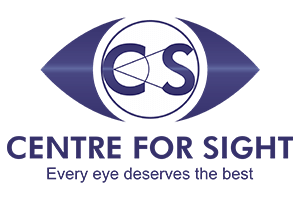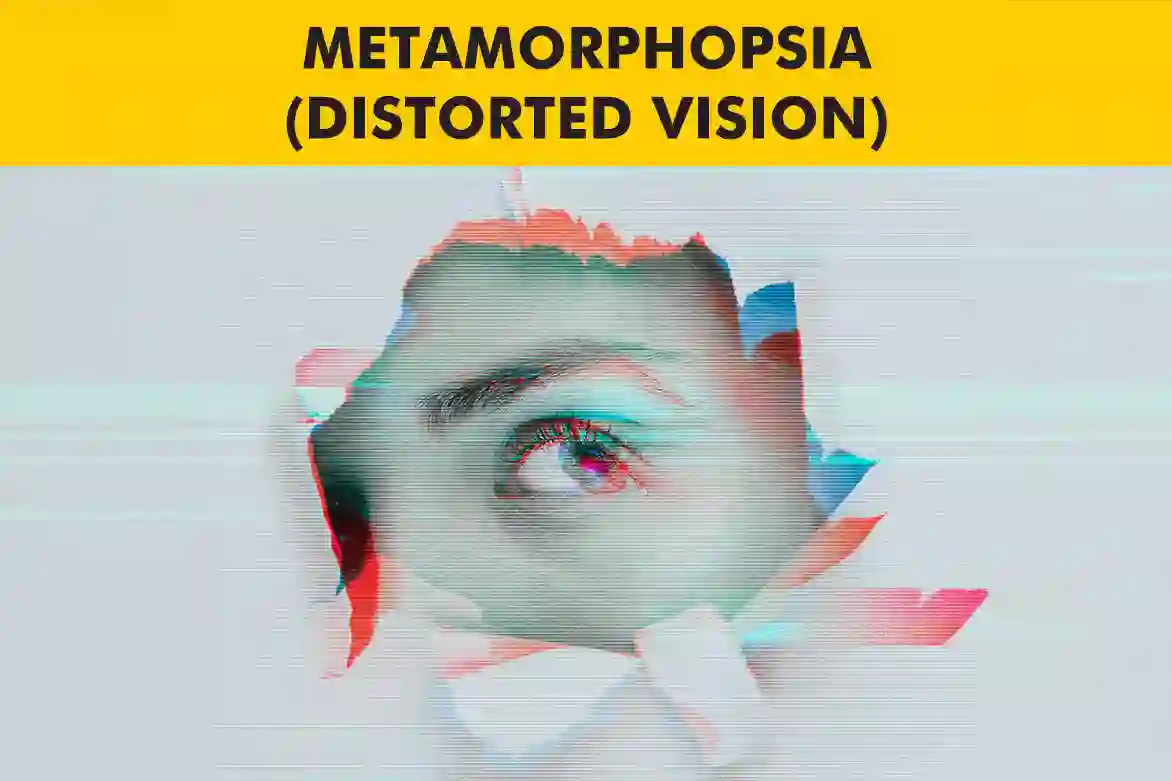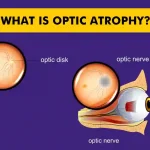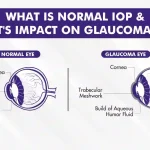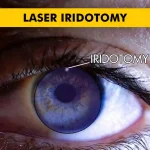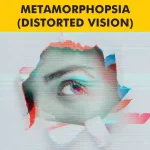Metamorphopsia, also known as distorted vision, is a visual disorder characterized by the perception of distorted or warped images. It is a condition that can affect both children and adults, and it can be caused by various factors. Through this blog, we will explore the causes of metamorphopsia, its symptoms, and treatment options.
Metamorphopsia can significantly impact an individual’s quality of life, making it difficult to perform everyday tasks such as reading, driving, or recognizing faces. However, with proper understanding and management, individuals with distorted vision can lead fulfilling lives. Let’s delve into the details of this condition and learn more about it.
Understanding Metamorphopsia
Metamorphopsia is a condition that affects the perception of visual stimuli. It is characterized by the distortion of straight lines, objects, or shapes, making them appear wavy, bent, or irregular. This distortion can occur in one or both eyes and may vary in severity. Some individuals may experience mild distortion, while others may have more pronounced visual abnormalities.
The exact mechanisms underlying metamorphopsia are not fully understood. However, it is believed to be associated with abnormalities in the macula, which is the central part of the retina responsible for sharp vision. Conditions such as age-related macular degeneration, macular pucker, and macular hole are often associated with distorted vision.
Metamorphopsia can also result from other eye conditions, including retinal detachment, diabetic retinopathy, and ocular tumors. In addition, certain medications, head trauma, and neurological disorders can contribute to the development of metamorphopsia.
It is important to note that distorted vision can have a significant impact on an individual’s daily life, affecting their ability to perform tasks that require accurate visual perception. Seeking early diagnosis and appropriate metamorphopsia treatment is crucial to manage the condition effectively.
Causes of Metamorphopsia
Major causes of metamorphopsia include:
1. Age-related macular degeneration: This condition, which primarily affects older adults, leads to the deterioration of the macula, resulting in distorted vision.
2. Macular pucker: Scar tissue formation on the macula can cause it to wrinkle, leading to visual distortions.
3. Macular hole: A small break or hole in the macula can cause central vision distortion.
4. Retinal detachment: When the retina detaches from the underlying tissue, it can cause visual abnormalities, including distorted vision.
5. Diabetic retinopathy: Uncontrolled diabetes can damage the blood vessels in the retina, leading to metamorphopsia.
6. Ocular tumors: Tumors in the eye can disrupt the normal structure of the retina and result in metamorphopsia.
7. Medications: Certain medications, such as hydroxychloroquine, can cause visual disturbances, including distorted vision.
8. Head trauma: Injury to the head can damage the optic nerve or the structures of the eye, leading to visual abnormalities.
9. Neurological disorders: Conditions like multiple sclerosis and stroke can affect the visual pathways, causing metamorphopsia.
It is important to consult with an eye care professional for a comprehensive evaluation to determine the underlying cause of metamorphopsia.
Symptoms of Metamorphopsia
Metamorphopsia is primarily characterized by the perception of distorted or distorted visual images. The following metamorphopsia symptoms may be experienced by individuals with distorted vision:
- Straight lines appear wavy, bent, or irregular
- Objects or shapes appear stretched, shrunken, or twisted
- Blurred or fuzzy vision
- Difficulty reading or recognizing faces
- Difficulty judging distances
- A central blind spot in the visual field
These symptoms can vary in severity depending on the underlying cause and individual factors. It is important to seek medical attention if you experience any visual abnormalities to receive an accurate diagnosis and appropriate treatment.
Diagnosis and Treatment
Diagnosing metamorphopsia involves a comprehensive eye examination and a detailed medical history evaluation. The eye care professional may perform the following tests:
Visual acuity test: Measures the clarity of vision at various distances.
Dilated eye examination: Allows the doctor to examine the structures at the back of the eye, including the retina and macula.
Amsler grid test: Involves looking at a grid pattern to identify any distortions or missing areas in the central vision.
Optical coherence tomography (OCT): Produces cross-sectional images of the retina to assess its thickness and detect any abnormalities.
Once a diagnosis is confirmed, the metamorphopsia treatment approach depends on the underlying cause. In some cases, addressing the underlying condition, such as treating diabetic retinopathy or performing surgery for retinal detachment, may help alleviate the visual distortions.
For age-related macular degeneration, various treatment options are available, including anti-vascular endothelial growth factor (anti-VEGF) injections, photodynamic therapy, and laser therapy. These treatments aim to slow down the progression of the condition and improve visual symptoms.
In addition to specific treatments, individuals with distorted vision can benefit from low vision aids, such as magnifying glasses or special lenses, to enhance visual function and quality of life. Vision rehabilitation programs may also be recommended to help individuals adapt to their visual changes and learn strategies to optimize their remaining vision.
Preventive Measures
While not all cases of metamorphopsia can be prevented, certain measures can help reduce the risk or delay the progression of the condition. These include:
Regular eye examinations: Routine eye check-ups can help detect any early signs of eye conditions that may lead to distorted vision.
Managing underlying health conditions: Proper management of conditions like diabetes and hypertension can reduce the risk of developing diabetic retinopathy or age-related macular degeneration.
Protecting the eyes: Wearing protective eyewear and taking precautions to prevent eye injuries can help minimize the risk of traumatic metamorphopsia.
Following medication instructions: If you are taking medications known to cause visual disturbances, it is important to follow the prescribed dosage and inform your healthcare provider of any changes in your vision.
It is important to consult with an eye care professional for personalized advice on preventive measures based on your specific risk factors and medical history.
Conclusion
Metamorphopsia, or distorted vision, can significantly impact an individual’s quality of life. It is essential to seek early diagnosis and appropriate treatment to manage the condition effectively. Understanding the causes, symptoms, and available treatment options can empower individuals with metamorphopsia to take control of their visual health and lead fulfilling lives.
If you experience any visual abnormalities or suspect distorted vision, it is crucial to consult with an eye care professional for a comprehensive evaluation. Remember, early intervention can make a significant difference in preserving and optimizing your vision.
FAQs
What causes metamorphopsia (distorted vision)?
Metamorphopsia can be caused by various factors, including age-related macular degeneration, macular pucker, macular hole, retinal detachment, diabetic retinopathy, ocular tumors, medications, head trauma, and neurological disorders.
Does metamorphopsia go away?
The resolution of metamorphopsia depends on the underlying cause. In some cases, treating the underlying condition or using visual aids can help alleviate the visual distortions.
Is metamorphopsia an emergency?
Metamorphopsia itself is not considered a medical emergency. However, sudden or severe visual distortions should be evaluated by an eye care professional to rule out any underlying serious conditions.
What is the difference between Micropsia and metamorphopsia?
Micropsia refers to the perception of objects appearing smaller than their actual size, while metamorphopsia refers to the distortion of visual images.
Can metamorphopsia be temporary?
Micropsia refers to the perception of objects appearing smaller than their actual size, while metamorphopsia refers to the distortion of visual images.
How do you test for metamorphopsia?
Metamorphopsia can be tested using an Amsler grid, which involves looking at a grid pattern to identify any distortions or missing areas in the central vision. Other tests, such as an optical coherence tomography (OCT) scan, may also be performed to assess the retina and macula.
